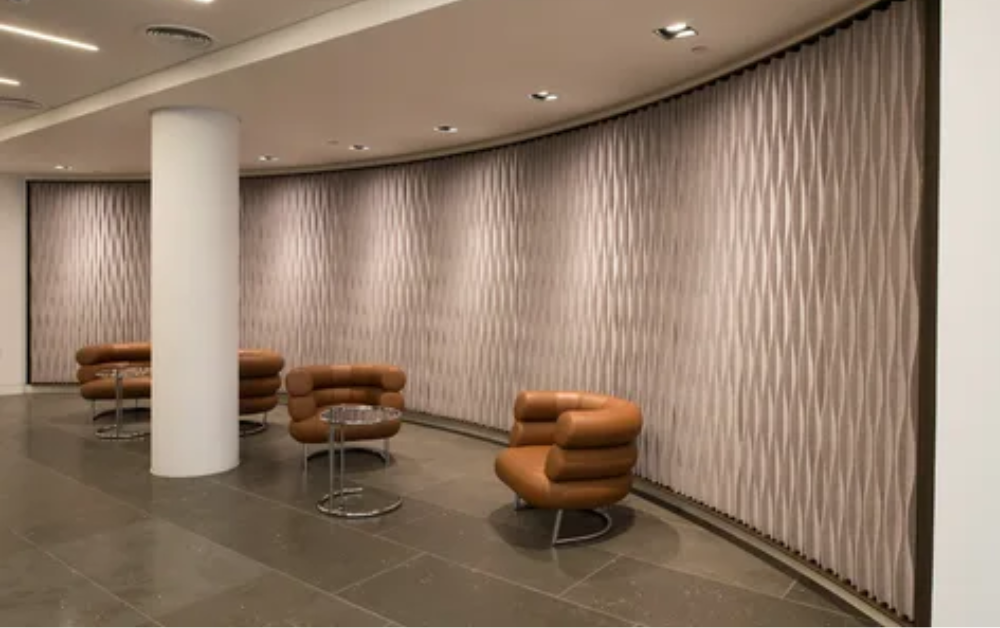In an increasingly noisy world, acoustic walls have emerged as a popular solution for controlling sound in residential, commercial, and industrial spaces. As technology and urbanization grow, so does the need for quieter, more controlled environments. Whether you are working from home, managing an open-plan office, or designing a high-performance recording studio, the question arises: Is an acoustic wall truly worth the investment in today’s world? This article explores the benefits, costs, applications, and long-term value of acoustic walls, helping you determine whether they are a worthwhile addition to your space.
Understanding Acoustic Walls
Acoustic walls are specialized wall systems designed to reduce noise transmission and improve sound quality within a space. Unlike traditional walls, which offer minimal soundproofing, acoustic walls incorporate sound-absorbing materials and construction techniques to minimize sound transfer between rooms and enhance auditory comfort.
There are two primary functions of an acoustic wall:
- Sound Insulation: Prevents sound from passing through walls, keeping external noise out and internal noise contained.
- Sound Absorption: Reduces echo and reverberation within a room, improving clarity and comfort.
Materials commonly used in acoustic walls include mineral wool, foam panels, fiberglass, mass loaded vinyl, and acoustic drywall. These materials are chosen for their sound-dampening properties and are often combined in layered constructions to achieve optimal results.
NOTE: Confidentiality and calmness in medical offices had been maintained once an Acoustic wall had been installed. Patient satisfaction and staff focus both increased. Trust perfectacousticsuae for expert acoustic solutions tailored to healthcare space
Applications of Acoustic Walls
The versatility of acoustic walls makes them suitable for a wide range of environments. Understanding the specific needs of each application can help determine the necessity and return on investment for such installations.
Residential Spaces
Homeowners are increasingly investing in acoustic walls for home offices, media rooms, and bedrooms. With remote work becoming the norm, having a quiet and focused environment is essential. Acoustic walls can minimize disturbances from external noise or other areas of the house, leading to improved productivity and better sleep quality.
Commercial Offices
In modern open-plan offices, noise distractions are a common issue. Acoustic walls help create quiet zones and meeting rooms where conversations remain confidential and focused work is possible. This contributes to a more productive and comfortable workplace.
Hospitality Industry
Hotels, restaurants, and event venues benefit from acoustic walls by enhancing guest comfort and privacy. Guests expect a quiet room experience, and diners enjoy meals in acoustically balanced environments. Proper sound management can significantly impact customer satisfaction and repeat business.
Educational Institutions
Classrooms, lecture halls, and libraries require controlled acoustics for effective communication and concentration. Acoustic walls help reduce external noise and improve speech intelligibility, leading to better learning outcomes.

Healthcare Facilities
Hospitals and clinics benefit from acoustic walls by reducing stress and enhancing patient recovery through quieter environments. Confidential conversations between patients and healthcare professionals are also better protected with acoustic solutions.
Recording Studios and Entertainment Venues
Acoustic control is critical in studios, theaters, and concert halls. Walls must isolate sound between rooms and control internal acoustics for optimal audio performance. Investment in high-quality acoustic walls is non-negotiable in these settings.
Benefits of Acoustic Walls
Investing in acoustic walls offers a range of tangible and intangible benefits that make them a compelling choice for many property owners and developers.
Improved Acoustic Comfort
A primary benefit is the significant improvement in acoustic comfort. By minimizing echoes and reducing sound transmission, acoustic walls create a more pleasant auditory environment that enhances communication and reduces fatigue.
Increased Privacy
Soundproof walls prevent confidential conversations from being overheard. This is especially important in offices, medical centers, and government buildings where privacy is essential.
Enhanced Productivity
Noise is a major productivity killer. In workplaces and study environments, reducing background noise improves focus and efficiency, which can translate into better performance and results.
Property Value Enhancement
High-quality acoustic treatment can increase the value of a property. Homebuyers and tenants often appreciate quiet, peaceful spaces, especially in noisy urban areas. Acoustic walls can also be a selling point for premium properties.
Regulatory Compliance
Certain industries are subject to noise regulations and building codes that require soundproofing solutions. Installing acoustic walls can help ensure compliance and avoid fines or legal issues.
Cost Considerations
The cost of installing acoustic walls varies depending on materials, design complexity, and the size of the area to be treated. On average, installation can range from $10 to $50 per square foot, with specialized environments such as studios or hospitals costing more due to higher performance requirements.
Factors Affecting Cost
- Material Choice: Premium materials like mass loaded vinyl and acoustic drywall are more expensive but offer superior performance.
- Installation Complexity: Retrofitting existing walls can be more costly than incorporating acoustic features into new construction.
- Design Requirements: Custom designs, aesthetic considerations, and additional features like integrated lighting or HVAC systems can influence cost.
While the initial investment can be significant, the long-term benefits often outweigh the upfront costs. Reduced maintenance, improved energy efficiency, and increased occupant satisfaction contribute to the return on investment.
Limitations and Challenges
Despite the benefits, acoustic walls may not be suitable for every situation. Here are some considerations to keep in mind:
Space and Design Constraints
Installing acoustic walls may require space that could be used for other purposes. In small rooms, thick wall systems might reduce usable floor area.
Aesthetic Concerns
Some acoustic materials can be visually unappealing if not integrated properly. However, modern design techniques and custom finishes can mitigate this issue.
Incomplete Noise Solutions
Acoustic walls alone may not address all noise problems. Other elements such as floors, ceilings, doors, and windows also contribute to sound transmission. A holistic acoustic treatment may be necessary for optimal results.
Innovations and Trends in Acoustic Wall Design
Advancements in materials and design are making acoustic walls more effective and attractive than ever before.
Sustainable Materials
Eco-friendly acoustic materials such as recycled fabrics, natural wool, and biodegradable foams are becoming more popular. These options align with green building standards and reduce environmental impact.
Modular Systems
Prefabricated acoustic wall panels allow for quicker installation and flexibility in design. These systems are ideal for temporary setups or spaces that require reconfiguration.
Aesthetic Integration
Designers are increasingly integrating acoustic walls into the overall aesthetic of a space. From decorative panels to artistic installations, functionality and beauty now go hand in hand.
Smart Acoustics
Emerging technologies include adaptive acoustic systems that adjust to ambient noise levels. These smart systems enhance performance in dynamic environments like offices and entertainment venues.
Conclusion: Is It Worth the Investment?
Whether an acoustic wall is worth the investment depends on your specific needs, goals, and budget. For environments where sound control is critical—such as offices, homes, studios, or healthcare facilities—the benefits are substantial and often justify the expense. Improved comfort, productivity, privacy, and property value make acoustic walls a smart choice for those looking to enhance their spaces.
However, it’s important to conduct a thorough assessment of your space, including a cost-benefit analysis and consultation with acoustic professionals. When properly designed and implemented, acoustic walls offer long-lasting value and contribute significantly to the quality of life and work in modern environments.
For More Isightful Articles Related To This Topic, Feel Free To Visit: techners








Leave a Reply